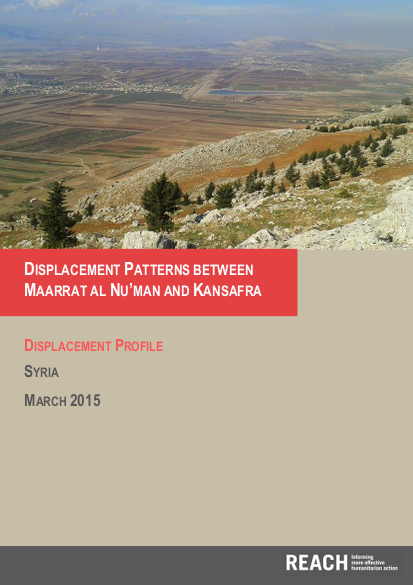
Now in its fifth year, the conflict in Syria is estimated to have left a third of the country’s population (7.6 million people) internally displaced with at least half of this number experiencing multiple displacements. While available data on the needs of displaced communities is already disparate and incomplete, humanitarian actors’ understanding of the situation for returnees and populations who have experienced multiple displacements is even less comprehensive, and represents an important information gap.
This case study seeks to understand the intentions and humanitarian needs of two groups of IDPs in northern Syria from Maarrat al Nu’man in Idleb Governorate—a city of approximately 50,000 people—who fled to the same town following an escalation of violence in their area of origin in October 2012. Both groups of displaced people fled to Kansafra — a town of about 7,500 people — that is approximately 20 kilometres away. Following the takeover by opposition forces in Maarrat al Nu’man and an escalation of violence in Kansafra in December 2014, one of these groups of IDPs (amounting to approximately 330 families) returned to their area of origin, while the other (amounting to approximately 100 families) remained in Kansafra.
While they once comprised a single community, the two groups’ opposing reactions to the same set of events reflect different underlying vulnerabilities and needs. By examining the factors that underlie one movement in greater detail, it may be possible to derive insights applicable in other contexts. While some of the motivations and constraints affecting IDPs from Syria will differ for each community, some characteristics are likely to be shared among them. This case study has been developed to document and examine two distinct displacement patterns, as well as to address wider issues related to return itself which could inform future humanitarian and post-conflict interventions.